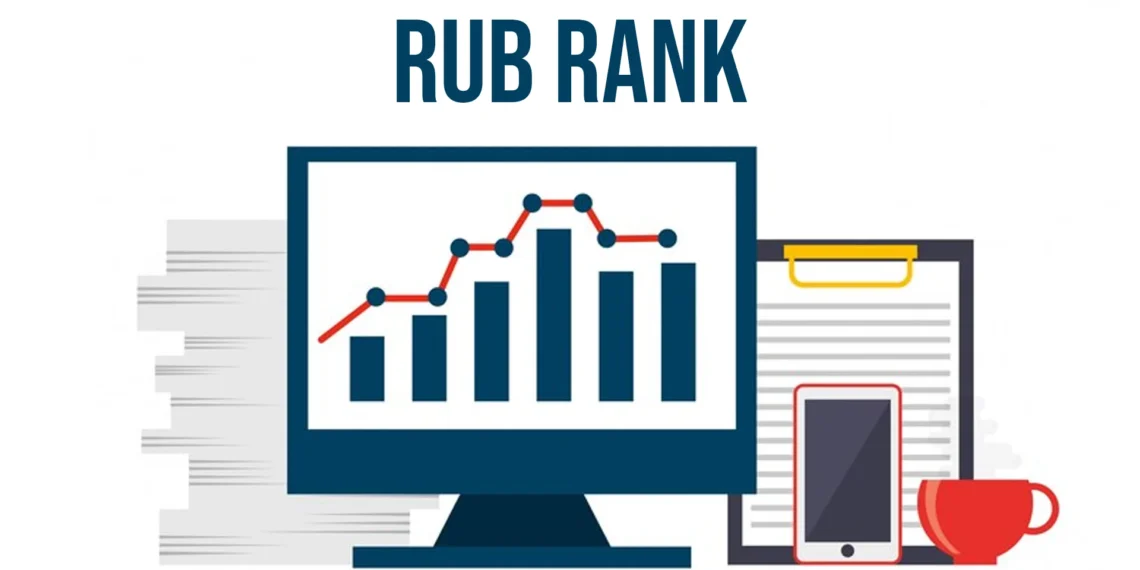In the ever-evolving landscape of education, business performance evaluation, and skill development, one term that consistently emerges as a cornerstone of effective assessment is rub ranking. This system not only ensures a more structured method of evaluation but also fosters transparency, consistency, and motivation for improvement. In this article, we delve deep into what rub ranking means, how it is applied across different industries, and why it’s essential in today’s results-driven environment.
What Is Rub Ranking?
Rub ranking refers to the method of ranking performance, work, or output using a rubric — a structured framework that breaks down evaluation into specific criteria and assigns scores or qualitative assessments to each criterion. The name derives from combining the words “rubric” and “ranking.”
Rubrics are widely used in education, but their application now extends to corporate evaluations, product reviews, peer assessments, and even creative work. Rub ranking enables evaluators to not only assign a grade or score but also provide insights into why that score was given — leading to more actionable feedback.
Key Components of a Rubric
Before we explore how rub ranking functions, it’s crucial to understand what makes up a solid rubric. Each rubric, and by extension each rub ranking system, generally contains the following components:
Criteria
These are the dimensions or aspects of the work being evaluated. In an essay, for instance, the criteria might include structure, grammar, content clarity, and originality.
Descriptors
Descriptors detail what performance looks like at each level for each criterion. For example, “Excellent,” “Good,” “Fair,” and “Poor,” or numerical levels like 4, 3, 2, and 1.
Scales
Scales provide the framework for assigning a specific score or value to the descriptors. This creates a measurable and consistent way to rank performance.
When rubrics are applied consistently, they become the foundation for a rub ranking system — ranking multiple performances relative to a rubric-based scale.
The Importance of Rub Ranking in Education
In classrooms across the globe, rub ranking has revolutionized assessment methods. Rather than relying on vague grading or gut feeling, teachers now use structured rubrics to evaluate everything from essays and presentations to science projects and teamwork.
Encouraging Objectivity
Rubrics eliminate much of the subjectivity traditionally associated with grading. A well-constructed rubric ensures that every student is assessed using the same criteria, which fosters fairness and transparency.
Providing Constructive Feedback
Because each section of the rubric corresponds to a specific element of performance, students receive targeted feedback. This helps them understand their strengths and areas for improvement — vital for academic and personal growth.
Boosting Student Motivation
When students understand exactly how they will be evaluated, they are more likely to engage with the material. Rub ranking offers a roadmap to success, guiding students through clear expectations.
Rub Ranking in the Corporate World
Rub ranking is not just for schools; it’s increasingly being adopted in business environments, especially in performance reviews, project evaluations, and customer satisfaction metrics.
Employee Evaluations
Human Resources departments use rubrics to assess employee performance. Criteria might include teamwork, punctuality, task completion, creativity, and leadership. Rub ranking helps create uniformity in reviews, making it easier to decide promotions, raises, or further training.
Project Assessment
Project managers can use rubrics to evaluate the success of a project across various metrics — timeliness, budget adherence, stakeholder satisfaction, and risk management. Ranking these projects using rubrics ensures clarity during post-mortem analysis and helps teams learn from both successes and failures.
Enhancing Customer Experience
Businesses also use rub ranking to gauge customer satisfaction. Surveys can be designed with rubric-based scales to measure service quality, product effectiveness, and overall experience. This helps companies pinpoint where to improve and how to innovate.
Rub Ranking in Creative Fields
In fields like art, music, film, and design, where subjectivity often dominates, rub ranking introduces a level of structured evaluation that balances creativity with performance expectations.
Art Competitions
Judges use rubrics with criteria such as originality, technique, emotional impact, and composition to evaluate submissions. This brings more legitimacy and transparency to contests.
Music and Performing Arts
In auditions and performances, rub ranking allows evaluators to assess rhythm, pitch, stage presence, and emotional expression using standard criteria, making the process more equitable.
Advantages of Using Rub Ranking
So, why is rub ranking gaining popularity across such a wide range of sectors? Here are some of the main benefits:
Consistency and Reliability
Rubrics reduce personal bias and ensure consistent evaluations across different evaluators and over time.
Time Efficiency
Although initial rubric creation takes time, using rub ranking speeds up the actual evaluation process.
Data-Driven Decision-Making
Rub ranking transforms qualitative judgments into quantifiable data, enabling better decision-making.
Enhanced Communication
Clear criteria and feedback strengthen communication between evaluators and those being evaluated.
Challenges in Implementing Rub Ranking
Despite its numerous benefits, rub ranking does come with its own set of challenges.
Rubric Quality
A poorly designed rubric can do more harm than good. It may lack clarity, be too broad or too rigid, or fail to cover important aspects of the task.
Resistance to Change
Some educators or managers may resist switching from traditional evaluation methods to rubrics, citing time investment or complexity.
Subjectivity Creep
Even with rubrics, human bias can sneak in — especially when descriptors are vague. Clear definitions and training are essential.
Best Practices for Effective Rub Ranking
To maximize the impact of rub ranking, consider the following best practices:
Start with Clear Goals
Before creating a rubric, define what success looks like. What should the final output achieve?
Involve Stakeholders
If possible, include input from students, employees, or other stakeholders when designing the rubric. This boosts buy-in and ensures the rubric is relevant.
Pilot and Revise
Test your rubric on a few examples before using it widely. Gather feedback and refine it regularly.
Train Evaluators
Ensure that all evaluators understand how to apply the rubric consistently and fairly. Calibration sessions can be helpful.
Keep It Transparent
Share rubrics with those being evaluated in advance. This promotes transparency and aligns expectations.
A Real-World Example of Rub Ranking
Imagine a high school English teacher assigning a persuasive essay. The rubric might look like this:
| Criteria | Excellent (4) | Good (3) | Fair (2) | Poor (1) |
|---|---|---|---|---|
| Thesis Statement | Clear and strong | Clear | Vague | Missing |
| Supporting Details | Compelling & rich | Adequate | Limited | None |
| Organization | Logical & flowing | Mostly clear | Disorganized | No structure |
| Grammar & Syntax | Flawless | Minor errors | Many errors | Frequent issues |
Using this rubric, the teacher assigns a rub ranking score to each student and gives targeted feedback on how to improve. The same logic applies in employee evaluations, customer surveys, and other settings.
Future of Rub Ranking in a Tech-Driven World
With the rise of digital learning platforms, AI-powered tools, and performance tracking software, rub ranking is evolving rapidly. Technologies are emerging that automate rubric-based evaluations using natural language processing and machine learning algorithms.
For instance, essay-scoring AI tools can now assign scores based on rubrics, provide detailed feedback, and even suggest learning resources. Similarly, employee performance platforms are integrating rub ranking into dashboards and analytics tools to track growth over time.
As these tools become more advanced, rub ranking will likely become the gold standard for structured evaluation in both educational and professional settings.
Rub Ranking: A Framework for Fair and Effective Evaluation
Why It Matters
In a world that values performance, consistency, and fairness, rub ranking stands out as a method that brings clarity and structure to the assessment process. Whether in schools, offices, or creative fields, the benefits of this system are clear — better feedback, more transparency, and increased motivation for improvement.
Conclusion
Rub ranking is more than just a buzzword — it is a powerful, adaptable method for evaluating performance across diverse domains. By embracing structured rubrics and ranking systems, individuals and organizations can ensure fair, transparent, and effective assessments that drive growth and success.
As we move into an increasingly data-driven future, the need for accurate, consistent, and insightful evaluation tools will only grow. Rub ranking meets this need head-on, offering a practical framework that benefits both evaluators and those being evaluated.
Whether you’re a teacher aiming to improve grading fairness, a manager looking to boost team performance, or a competition judge wanting to ensure objectivity — rub ranking is a tool worth mastering.








